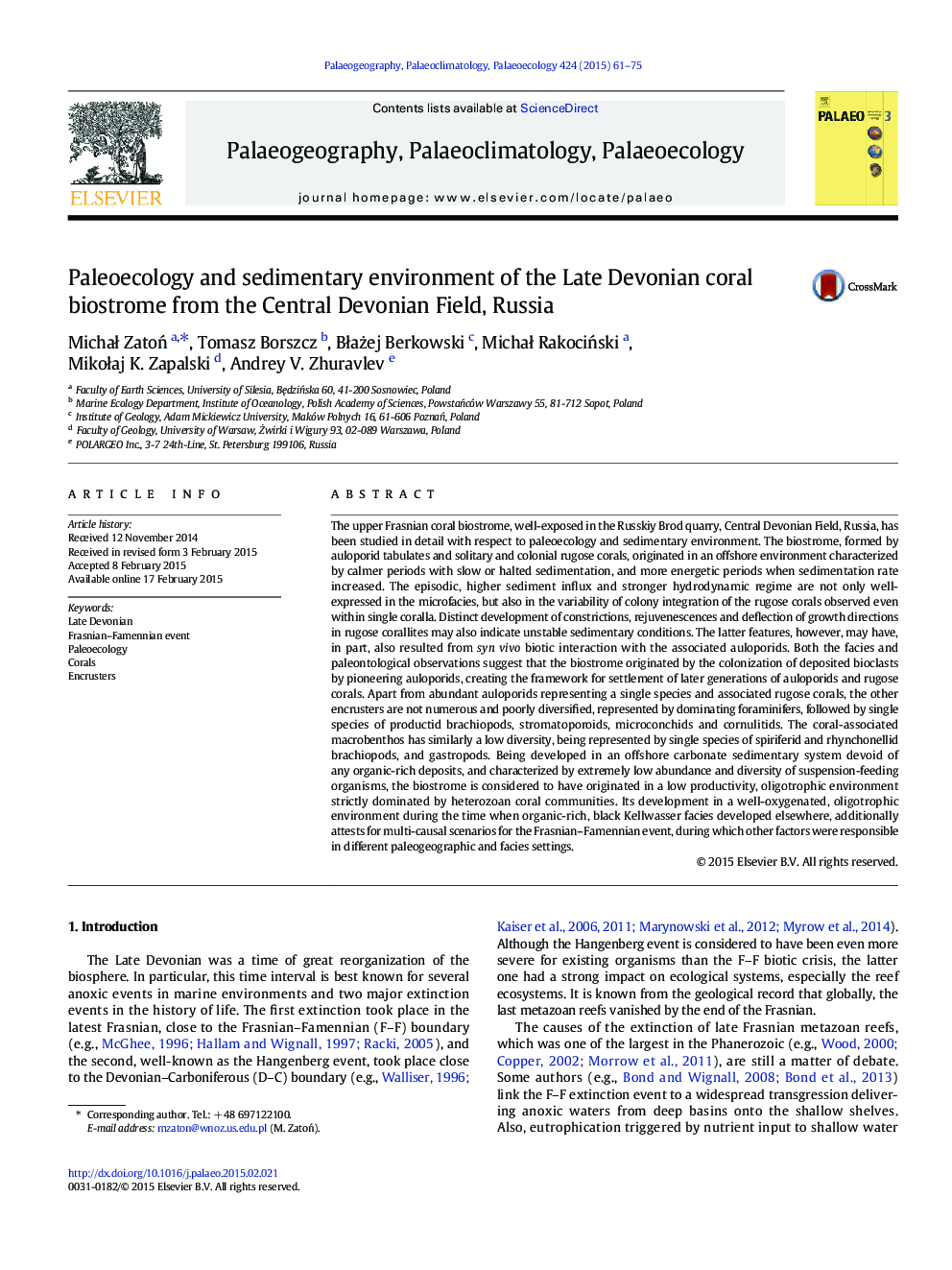| کد مقاله | کد نشریه | سال انتشار | مقاله انگلیسی | نسخه تمام متن |
|---|---|---|---|---|
| 6349758 | 1622166 | 2015 | 15 صفحه PDF | دانلود رایگان |
- Upper Frasnian coral biostrome from Russia was investigated.
- It is dominated by auloporid tabulates which are associated with rugose corals.
- Other macrobenthos and associated encrusters are rare and not diverse.
- The biostrome developed in calm, offshore setting with episodic disturbance.
- It presumably originated in oligotrophic environment.
The upper Frasnian coral biostrome, well-exposed in the Russkiy Brod quarry, Central Devonian Field, Russia, has been studied in detail with respect to paleoecology and sedimentary environment. The biostrome, formed by auloporid tabulates and solitary and colonial rugose corals, originated in an offshore environment characterized by calmer periods with slow or halted sedimentation, and more energetic periods when sedimentation rate increased. The episodic, higher sediment influx and stronger hydrodynamic regime are not only well-expressed in the microfacies, but also in the variability of colony integration of the rugose corals observed even within single coralla. Distinct development of constrictions, rejuvenescences and deflection of growth directions in rugose corallites may also indicate unstable sedimentary conditions. The latter features, however, may have, in part, also resulted from syn vivo biotic interaction with the associated auloporids. Both the facies and paleontological observations suggest that the biostrome originated by the colonization of deposited bioclasts by pioneering auloporids, creating the framework for settlement of later generations of auloporids and rugose corals. Apart from abundant auloporids representing a single species and associated rugose corals, the other encrusters are not numerous and poorly diversified, represented by dominating foraminifers, followed by single species of productid brachiopods, stromatoporoids, microconchids and cornulitids. The coral-associated macrobenthos has similarly a low diversity, being represented by single species of spiriferid and rhynchonellid brachiopods, and gastropods. Being developed in an offshore carbonate sedimentary system devoid of any organic-rich deposits, and characterized by extremely low abundance and diversity of suspension-feeding organisms, the biostrome is considered to have originated in a low productivity, oligotrophic environment strictly dominated by heterozoan coral communities. Its development in a well-oxygenated, oligotrophic environment during the time when organic-rich, black Kellwasser facies developed elsewhere, additionally attests for multi-causal scenarios for the Frasnian-Famennian event, during which other factors were responsible in different paleogeographic and facies settings.
Journal: Palaeogeography, Palaeoclimatology, Palaeoecology - Volume 424, 15 April 2015, Pages 61-75
